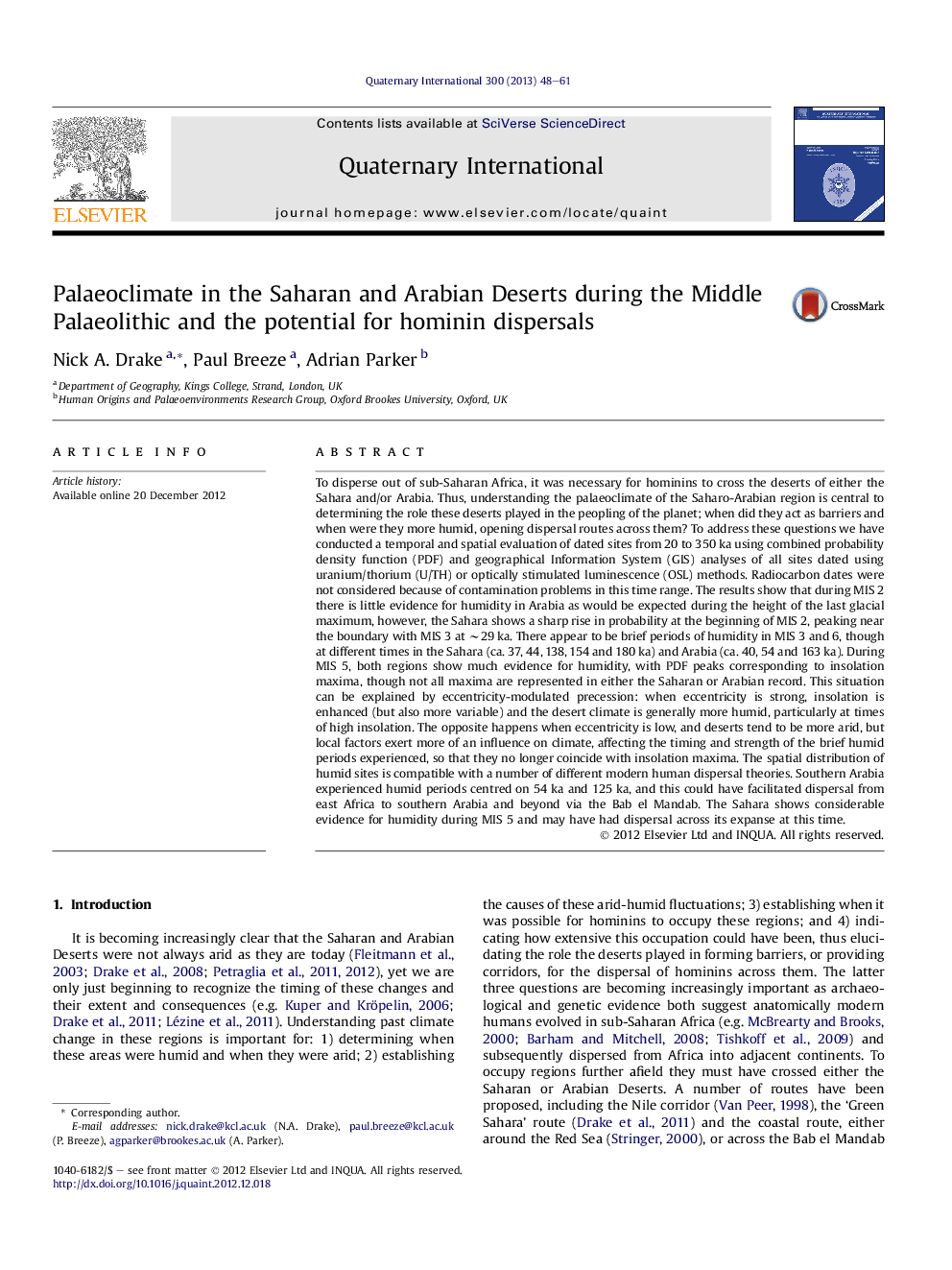| کد مقاله | کد نشریه | سال انتشار | مقاله انگلیسی | نسخه تمام متن |
|---|---|---|---|---|
| 7452592 | 1484189 | 2013 | 14 صفحه PDF | دانلود رایگان |
عنوان انگلیسی مقاله ISI
Palaeoclimate in the Saharan and Arabian Deserts during the Middle Palaeolithic and the potential for hominin dispersals
ترجمه فارسی عنوان
پائئوسکلیمات در بیابان های صحرای آفریقا و عربستان در طول پیلئومیت میانی و پتانسیل پراکندگی های هومیین
دانلود مقاله + سفارش ترجمه
دانلود مقاله ISI انگلیسی
رایگان برای ایرانیان
موضوعات مرتبط
مهندسی و علوم پایه
علوم زمین و سیارات
زمین شناسی
چکیده انگلیسی
To disperse out of sub-Saharan Africa, it was necessary for hominins to cross the deserts of either the Sahara and/or Arabia. Thus, understanding the palaeoclimate of the Saharo-Arabian region is central to determining the role these deserts played in the peopling of the planet; when did they act as barriers and when were they more humid, opening dispersal routes across them? To address these questions we have conducted a temporal and spatial evaluation of dated sites from 20 to 350Â ka using combined probability density function (PDF) and geographical Information System (GIS) analyses of all sites dated using uranium/thorium (U/TH) or optically stimulated luminescence (OSL) methods. Radiocarbon dates were not considered because of contamination problems in this time range. The results show that during MIS 2 there is little evidence for humidity in Arabia as would be expected during the height of the last glacial maximum, however, the Sahara shows a sharp rise in probability at the beginning of MIS 2, peaking near the boundary with MIS 3 at â¼29Â ka. There appear to be brief periods of humidity in MIS 3 and 6, though at different times in the Sahara (ca. 37, 44, 138, 154 and 180Â ka) and Arabia (ca. 40, 54 and 163Â ka). During MIS 5, both regions show much evidence for humidity, with PDF peaks corresponding to insolation maxima, though not all maxima are represented in either the Saharan or Arabian record. This situation can be explained by eccentricity-modulated precession: when eccentricity is strong, insolation is enhanced (but also more variable) and the desert climate is generally more humid, particularly at times of high insolation. The opposite happens when eccentricity is low, and deserts tend to be more arid, but local factors exert more of an influence on climate, affecting the timing and strength of the brief humid periods experienced, so that they no longer coincide with insolation maxima. The spatial distribution of humid sites is compatible with a number of different modern human dispersal theories. Southern Arabia experienced humid periods centred on 54Â ka and 125Â ka, and this could have facilitated dispersal from east Africa to southern Arabia and beyond via the Bab el Mandab. The Sahara shows considerable evidence for humidity during MIS 5 and may have had dispersal across its expanse at this time.
ناشر
Database: Elsevier - ScienceDirect (ساینس دایرکت)
Journal: Quaternary International - Volume 300, 25 June 2013, Pages 48-61
Journal: Quaternary International - Volume 300, 25 June 2013, Pages 48-61
نویسندگان
Nick A. Drake, Paul Breeze, Adrian Parker,
